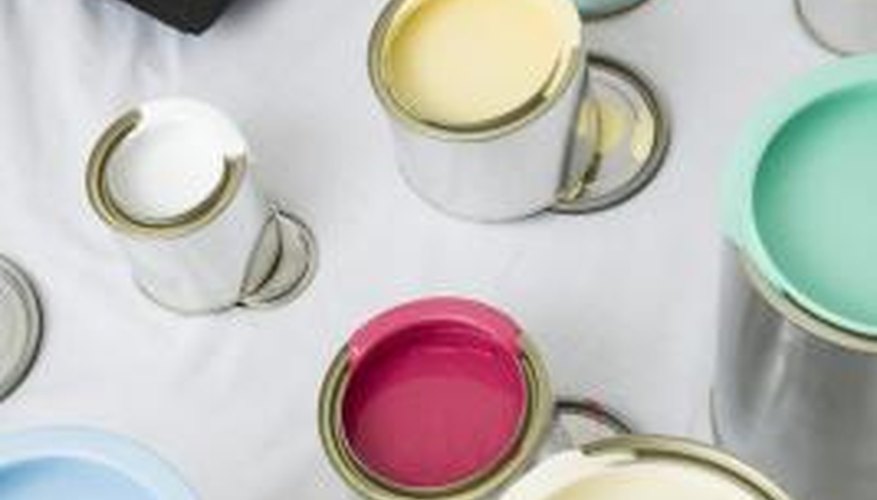Painting your home, either inside or out, can be a pleasant, even therapeutic experience when you have found a good working rhythm. Finding out toward the end of your project that you do not have enough paint to finish the job can be frustrating, particularly if your paint is a custom-made shade and impossible to just pick up quickly at the home improvement store. Before you get down to the dregs, learn some tricks to help you make small amounts of paint go further.
- Painting your home, either inside or out, can be a pleasant, even therapeutic experience when you have found a good working rhythm.
- Finding out toward the end of your project that you do not have enough paint to finish the job can be frustrating, particularly if your paint is a custom-made shade and impossible to just pick up quickly at the home improvement store.
Use a roller or paintbrush as your application methods. The coverage of these tools is higher than that of a paint sprayer. Sprayers are more likely to overspray, due to either mechanical or user error; applying the paint by hand may be more easily controlled when you have limited amounts of paint with which to work.
Paint on a smooth surface to extend the coverage of your paint. Excess paint can gather in the grooves and nooks of a rough or porous surface, but will spread more evenly on a flat surface. If your walls are textured, you may not be able to avoid this problem. Ensure that surfaces that are supposed to be smooth really are so before you paint by sanding them.
Dilute your paint as a last resort. Thinning your paint with water or paint thinner is generally not recommended because the colour, coverage and drying time will be affected. In the end, you may need more paint because a first coat that has been diluted may not cover the primer well enough. In times of desperation, add a few tablespoons of water to your paint before you begin the project, so that the entire area to be painted will end up the same colour.
TIP
Eliminate the problem of not having enough paint to go around by measuring the square footage of the room to be painted. Multiply the height of the room by the width to get the square footage, and then subtract the area of the windows. Read the label on the paint can to determine the coverage of the paint before you purchase. Most finish coats can provide about 400 square feet of coverage per gallon.
